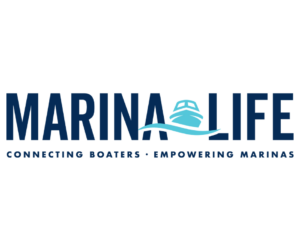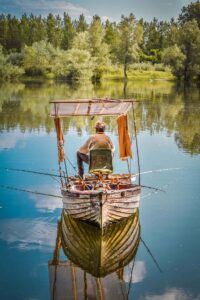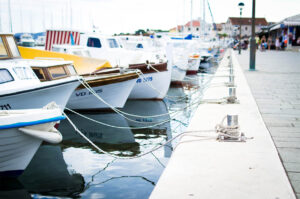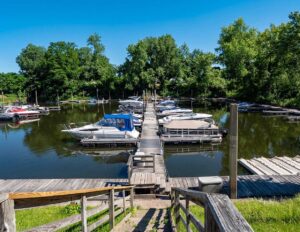Fresh drinking water carried aboard for a day boater is a convenience. For someone cruising or living aboard, it is a necessity. It sounds simple: fill your tank with fresh clean water, use it and repeat. But managing the fresh drinking water system on a boat at times seems anything but easy. From poorly maintained marina plumbing to very hard or foul-tasting source water, countless factors work against keeping good quality water. Add to that all the organisms that can grow in the water once it’s in your tanks or the unknown conditions of a used boat’s tanks, and it appears the deck is stacked against you. However, with a few good habits put in place, along with some relatively inexpensive accessories, you can count on good quality fresh water.
Source Water
The saying “garbage in, garbage out” certainly applies here. It is an understand-able but dangerous assumption to believe the water available at a marina is always good. You have no way of knowing the water’s source or how the marina maintains its plumbing system. A marina may be connected to municipal water that could be distasteful hard mineral water, a small rural marina could be on a local well, or the marina may have just fixed broken pipes that are still filled with debris and sealants from repair work. Never assume a marina’s water is drinkable. And never use an unknown hose connected to a pier spigot regardless of how long you let it run before filling your tanks. Use a designated NSF/ANSI 61 certified water hose, empty it and keep the ends screwed together when not in use.
Pre-Filters
It is a good habit to always filter the water you put into your tanks. A standard 2½- inch-by-10-inch filter housing is available from a variety of sources. They are inexpensive and easy to use with standard hose fittings. The filter cartridges come in several micron sizes and are available in sediment or carbon-block styles. The carbon-block filters, which remove unwanted tastes, odors and particulate, also eliminate chlorine and should only be used when tank water is actively used and replenished. Tanks holding non-chlorinated water for extended periods are at increased risk of microbial growth.
Water Softeners
In addition to filtering tank water, you may also benefit from softening the water, depending on the source. Hardness in water is usually due to high levels of calcium and magnesium. Water hardness test strips are inexpensive and easy to use, if you are not certain. Water softeners are a common site along marina piers for washing and drying with a spot-free rinse, and some are certified to use as drinking water. Small portable water softeners typically use an ion-exchange process to replace the undesirable calcium and magnesium minerals with sodium. If the source water is very hard, don’t hesitate to soften it. Hard water can be quite damaging to plumbing fixtures and finishes within the boat.
Water Deionizers
The same ion-exchange process that softens water can also completely deionize water by removing all minerals. While it’s not suitable for drinking, it is wonderful for washing your boat. Deionized water leaves virtually no spots, so all you need to do is wash and rinse with no drying. It saves hours in boat washing. Also deionized water is great for rinsing salt from a boat. Because the water is completely mineral free, it has an affinity for the salt, drawing it into the water when rinsing the boat.
Point-of-Use Filters
Just because you put clean water in your tanks doesn’t mean it stays that way. Some pretty nasty stuff can grow within your boat’s tanks and plumbing components, especially if the water is sitting unused for long periods of time. Point-of-use filters, typically installed at a galley sink can insure safe drinking water free of microorganisms, but they are not all created equal. Investigate the differences between filter types in selecting the right one for you.
Water Tank Cleaning
Sometimes you need to completely clean and disinfect your water tank. To treat microbial growth, add a chlorine bleach solution (one-part bleach to 150 parts water). This equals about one cup of bleach per 10 gallons of water. Chlorine test strips are available at pool stores to confirm the bleach concentration of the solutions you mix. Remove all filters and faucet screens and turn off the water heater prior to flushing the system. Allow the solution to run through all the faucets until you smell bleach in each location. Top off the tank with fresh water and let it stand overnight. Flush the entire system multiple times with clean water the next day until the chlorine smell completely disappears, then drain the system. (More information on tank cleaning is available at clorox.com/how-to/disinfecting-sanitizing/ disinfecting-with-bleach/bleaching-water-tanks).
If you are concerned about using high concentrations of chlorine, consider effective alternatives such as PuriClean by CleanTabs or TastePure by Camco. The simplest solution for keeping your water tanks clean and healthy is use. The more you cycle water through the tanks, the cleaner the system stays. Fresh water for drinking and cleaning is possible and easy to maintain with a few good habits and simple accessories. All it takes is being a “Smart Boater.”





